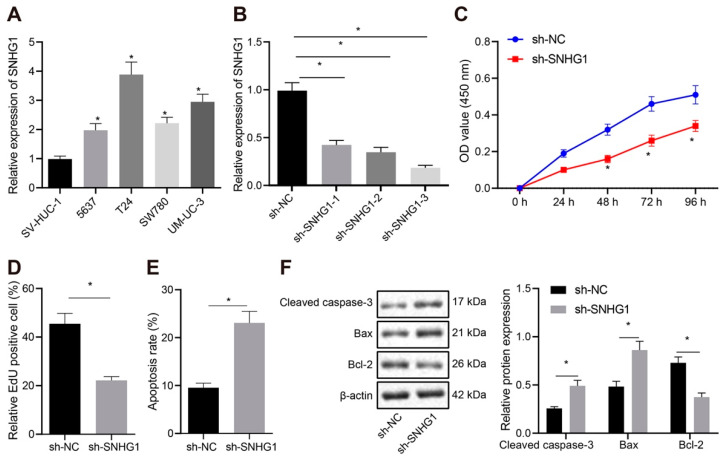Figure 2.
Silencing SNHG1 inhibits bladder cancer cell proliferation and promotes cell apoptosis. (A) qRT-PCR detecting the expression of SNHG1 in one normal urothelial cell line SV-HUC-1 and four bladder cancer cell lines (5637, T24, SW780, and UM-UC-3), and selection of T24 cells with the highest expression and 5367 cells with the lowest expression for subsequent experiments. T24 cells were transfected with si-NC or si-SNHG1. (B) qRT-PCR determination of the silencing efficiency of three sh-SNHG1 in T24 cells, and screening out of the highest silencing efficiency sh-SNHG1-3. (C) CCK-8 assay of the change of T24 cell viability. (D) The changes of T24 cell proliferation detected by EdU assay. (E) Flow cytometry analysis of the changes of T24 cell apoptosis. (F) Western blot analysis of the expression of Cleaved caspase-3, Bax, and Bcl-2 in T24 cells. * p < 0.05. The experiment was repeated three times. Data were presented as mean ± standard deviation and compared by one-way analysis of variance (ANOVA), followed by Tukey’s post hoc test.

